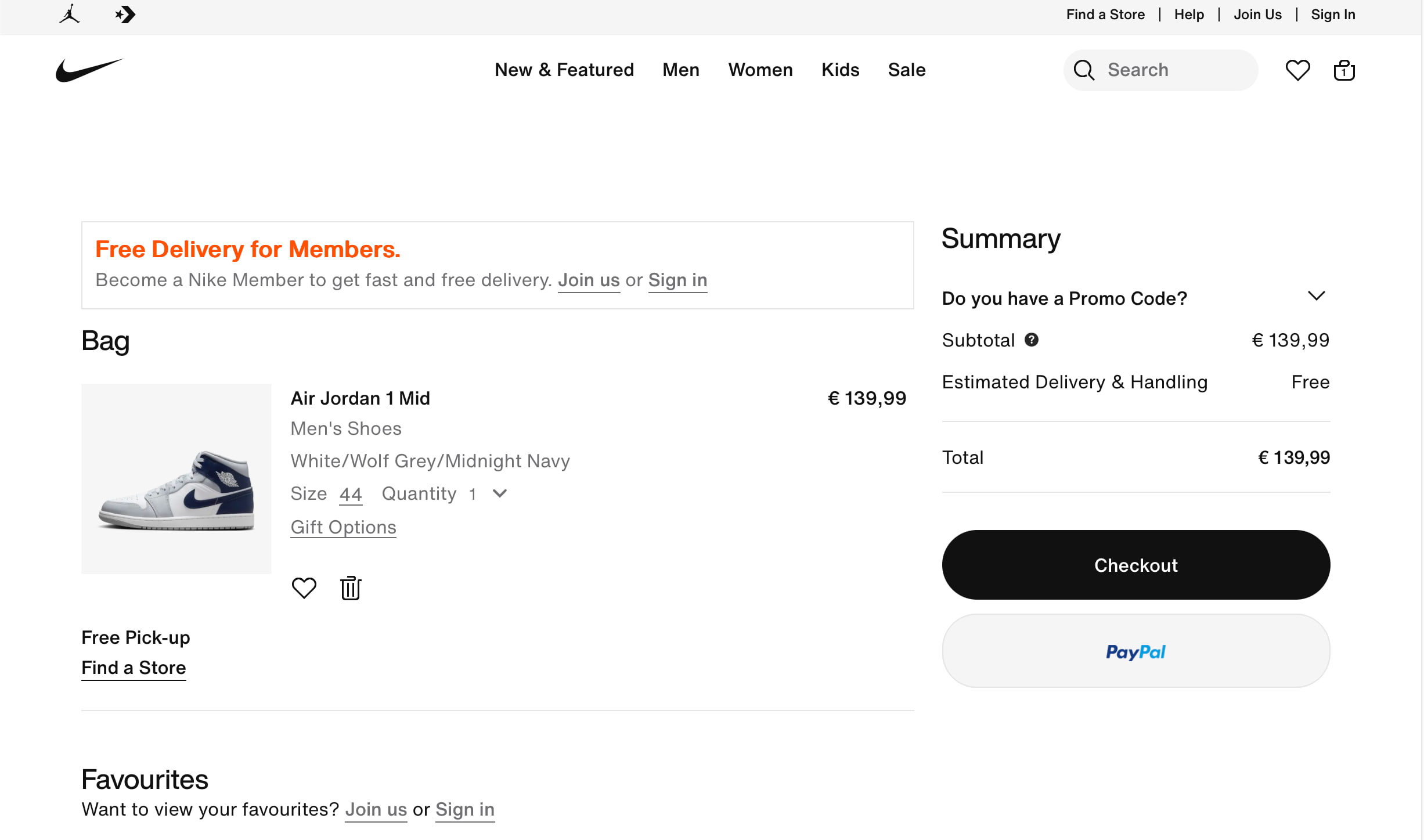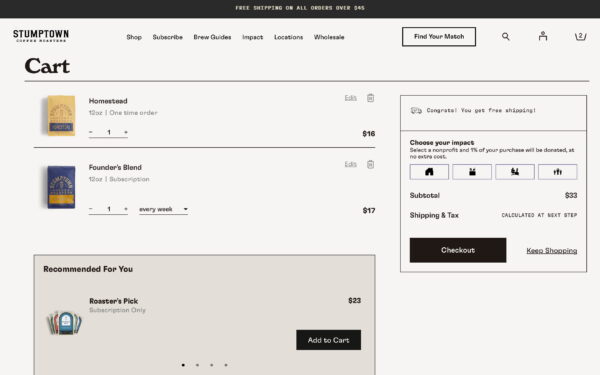Understanding shopping cart abandonment

As webshop owners, we continuously refine our checkout process by monitoring shopping cart abandonment and running A/B tests. Why do some users fail to make purchases even after adding products to their carts? This article explores that question while considering diverse perspectives about abandoned shopping carts.
What is shopping cart abandonment?
Shopping cart abandonment occurs when online shoppers add items to their virtual cart but leave the site without completing the purchase. This often results from unexpected costs, complex checkout processes, or limited payment options. Addressing these issues is vital for ecommerce businesses to boost sales and improve customer satisfaction. Optimizing this is a huge part of ecommerce SEO and Shopify SEO.
Analyzing abandoned shopping carts
Shopping cart abandonment continues to challenge ecommerce businesses, with statistics showing that nearly 70% of potential purchases are left incomplete. This is a huge annual loss. While this represents a significant economic issue, exploring it unveils a complex mix of cultural, technological, and behavioral factors.
Economic and behavioral insights
The many abandoned shopping carts may reflect broader consumer behavior trends, especially in a cautious post-pandemic environment. Consumers are increasingly deliberate about spending, influenced by economic factors like inflation and financial uncertainty. This trend aligns with the behavioral economic principle of loss aversion, where the fear of making a poor purchase decision outweighs the potential benefits.
Cultural variations in shopping behavior
Cultural influences profoundly affect shopping behaviors, with some cultures prioritizing the experience over the transaction. In regions where shopping is viewed as a social activity, higher abandoned shopping cart rates might occur as consumers enjoy browsing without the intent to purchase immediately. This cultural perspective invites businesses to consider localized strategies that respect and leverage these social shopping practices.
For some, shopping isn’t just a functional task; it’s an enjoyable activity akin to window shopping. These users may add items to carts for fun rather than purchase. Online window shopping could explain some cart abandonment, as users may use carts as temporary wish lists, planning to revisit them later.
Technological and psychological dimensions
Technological advancements, such as predictive AI, offer promising solutions to reduce abandoned shopping carts by addressing consumer hesitations. However, this raises privacy concerns, prompting the need for transparent data practices. Psychologically, shoppers may experience decision fatigue or become overwhelmed by choice, leading to abandonment. Simplifying choices and providing clear, concise information can alleviate these issues.
Ethical and environmental considerations
The rise of sustainability and ethical consumption reshapes consumer expectations. As environmental concerns become more prominent, consumers demand transparency and ethical practices from retailers. Businesses that fail to meet these expectations risk losing customers who prioritize these values, highlighting the need for authentic corporate responsibility.
Alternative shopping models
Community-based buying and cooperatives represent alternative shopping models emphasizing collective purchasing power and shared values. These models can reduce abandonment by fostering community and commitment among consumers. Additionally, they challenge traditional capitalist paradigms, offering a collaborative approach to consumption.

Causes of cart abandonment
The reasons for cart abandonment can be surprisingly straightforward, often overlooked during checkout optimization. While many focus on preventing abandonment, it’s crucial to understand why users utilize shopping carts initially. As we discussed, could cultural practices or economic conditions influence shopping behavior, leading to varying patterns of cart usage across different regions?
Purpose of shopping carts
Research by Close and Kukar-Kinney (2010) highlights that the primary focus shouldn’t solely be on abandonment but also the initial use of shopping carts. Many assume users add products to carts to buy them, but this isn’t always true. A significant portion of users treat shopping carts as wish lists or use them to calculate total costs, including potential hidden fees.
This raises the question: How do digital shopping habits compare to traditional in-store shopping, and what lessons can be drawn from other industries, such as hospitality or travel, where reservations and bookings often follow similar patterns?
Kaufman-Scarborough and Lindquist (2002) also note that shopping carts serve purposes beyond immediate purchases. This implies that “abandonment” might be an oversimplification. Some users explore and tally future purchases without intending to buy immediately.
Session time-out concerns
Session time-out refers to the automatic expiration of a user’s shopping session on an ecommerce website after a period of inactivity. When a session times out, the items in the user’s shopping cart may be lost or require re-addition, leading to frustration and potential abandonment. This technical limitation can significantly impact the shopping experience, particularly for users who take longer to make purchase decisions or are interrupted during the process.
To mitigate abandonment caused by session timeouts, you can extend session durations. You can also implement persistent shopping carts or reminders to encourage users to complete their purchases before the session expires.
Challenges in understanding cart usage
Determining why users abandon carts and how they use them is challenging but possible. Studies and enhanced ecommerce analytics in tools like Google Analytics can provide insights. Exit intent surveys, which appear when users attempt to leave, can offer valuable feedback on abandonment reasons.
The famous Baymard Institute statistics show an average cart abandonment rate of 70.19% (as of September 2024), highlighting the need for comprehensive analysis. Comparative studies across different retail sectors or geographic markets reveal unique patterns or universal truths about consumer behavior.
Reasons for abandoned shopping carts
The Baymard Institute identified several causes of cart abandonment. Here are the main ones:
- 48% Extra costs too high (shipping, tax, fees)
- 26% The site wanted me to create an account
- 25% I didn’t trust the site with my credit card information
- 23% Delivery was too slow
- 22% Too long/complicated checkout process
- 21% I couldn’t see/calculate the total order cost up-front
- 18% Returns policy wasn’t satisfactory
- 17% Website had errors/crashed
- 13% There weren’t enough payment methods
- 9% The credit card was declined
There are many opportunities to apply insights from mobile app user experience research to improve mobile shopping cart processes. Technological advancements, such as AI and machine learning, can also personalize and streamline the shopping experience on mobile devices.
Suggestions for improvement
To effectively address cart abandonment and its alternative uses, we must consider a range of strategies that incorporate diverse perspectives and innovative thinking. Here are some suggestions that help improve the shopping cart experience.
1. Transparent pricing and costs
While clearly displaying prices and additional costs like shipping is fundamental, consider how cultural perceptions of pricing transparency might vary. In some regions, consumers expect negotiation, while others value fixed, upfront pricing. Brands can experiment with dynamic pricing models or offer region-specific promotions to align with local expectations.
2. Diverse and flexible payment options
Beyond merely outlining payment methods, consider integrating payment innovations such as digital wallets or microfinancing options. These can cater to tech-savvy consumers and those with limited access to traditional banking. Offering payment flexibility reduces barriers and aligns with the growing trend toward financial inclusivity.
3. Streamlined checkout process
Defining checkout steps is crucial, but personalizing the process is equally important. Use data analytics to tailor the checkout experience based on user behavior, such as pre-filling information for returning customers or offering fast-track options for those in a hurry. To minimize friction, consider implementing one-click checkouts, similar to Amazon’s model.
4. Wish lists and alternative engagements
Implementing wish lists is a practical way to differentiate between genuine abandonments and alternative cart uses. However, expanding beyond traditional wish lists to include social commerce features — like sharing wish lists with friends or integrating with social media platforms — can enhance the shopping experience. This builds community and taps into the influence of peer recommendations. Retargeting and cart recovery email campaigns are also valid options.
5. Social commerce and community-driven experiences
Social commerce and community-driven shopping are reshaping how consumers interact with brands. By creating platforms where users can collaborate, share reviews, or engage in group buying, businesses can foster a sense of community that reduces shopping cart abandonment. These experiences transform shopping from a solitary activity to a shared journey, increasing consumer commitment.
6. Ethical and sustainable practices
Aligning with consumer values on sustainability and ethics can mitigate cart abandonment. Clearly communicate how products meet ethical standards, whether through sustainable sourcing or fair trade certification. Transparency can reassure consumers and reduce shopping cart abandonment driven by ethical concerns.
7. Technological integration and innovation
Explore technologies like augmented reality to offer virtual try-ons or 3D product visualizations. These innovations can reduce uncertainty and enhance consumer confidence, particularly in fashion and home furnishings, where physical interaction with products is traditionally valued.
8. Feedback and iterative improvement
Encourage consumer feedback at various shopping journeys to identify pain points leading to abandonment. Based on this feedback, implement iterative improvements, ensuring the shopping experience evolves in line with consumer expectations and technological advancements.
These strategies give businesses insight into the issues and solutions that reduce shopping cart abandonment rates. As a business owner, you want to improve the overall shopping experience for your customers. This comprehensive approach addresses practical and emotional aspects of consumer behaviors. The goal should be to foster loyalty and encourage conversion in a difficult ecommerce environment.

What’s your view on abandoned shopping carts?
How do you handle shopping cart abandonment on your site? Do you provide wish lists? Consider these insights to optimize your website’s shopping experience. Maybe you borrowed other innovative strategies from other industries or cultures for your approach to reducing cart abandonment? If not, take a look around and get inspired!

